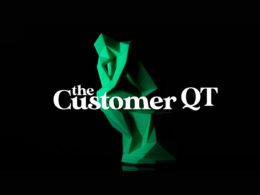Starting the employee engagement process early is a no-brainer.
We all know what it’s like to fear the first day of any given new situation. There’s the first day of school. The first day of a new job. The first day of a post-doctorate. The first day of an internship. The level of readiness before these all-important firsts comes down to the engagement leading up to that moment. Yet, research shows that only 12% of organizations do this at all, leaving 88% of organizations with a huge opportunity.
by Gregg Lewis
Employee engagement and onboarding refer to the activities put in place when a person starts a new role. In our experience, this includes the standard welcome to the team email, the pack on your desk, and a step-by-step onboarding document, if you’re lucky.
This bombardment of information at the commencement of a new role can be overwhelming and impossible to complete when you’re also expected to learn the job at hand. This practice also doesn’t consider the learning preferences of that individual and assumes that they will have time to complete all the processes.
How you can lead best-in-class onboarding and engagement
We know that a great onboarding experience increases retention rates by up to 82%.
Starting the employee engagement process early is a no-brainer. Employee onboarding can commence immediately and in a way that is relevant, timely, and fun! Once you’ve gone through the laborious process of shortlisting, interviewing, and hiring, retaining employee interest is crucial. The average cost to hire in the United States is around $4,129, so it’s vital to maximize the opportunity to build rapport and trust early.
Where does data fit into the onboarding process?
Consider for a moment the masses of paperwork involved in onboarding an employee. Paperwork is also true of bringing a new student to a university or an intern to a large global bank. To illustrate this scenario, we recently helped a Sovereign Wealth Fund engage incoming interns using a companion app. Engaging interns in this environment is paramount, as this is a core recruitment funnel, and just like the NBA draft—competition for Ivy League interns is high. The competitive nature of graduate banking roles also makes this a unique playing field. Our client had experienced a drop-out rate of 25-30% during the 9-month wait before cohorts started in previous years.
To combat this, we worked closely with the bank to build a game-based engagement mechanic that would keep candidates engaged while gradually getting to know them and funnelling them through essential stages of onboarding. The app captured crucial data points, some of which helped logistically, others that indicated individuals’ personal preferences, enabling us to tailor mechanics and adapt the experience further.
The data part of this is most crucial, making the process measurable, and in real-time, our client was able to see how engaged the cohort was. Engagement visibility gave the client the power to make immediate changes to the experience if they recorded low levels of engagement. The bank was empowered to proactively re-engage with these students and mitigate the risk of losing them to a competitive bank.
Gamification leads to higher engagement
Another element of onboarding we can probably all relate to is the boredom of form filling and learning important but often dull information. Gamification allows information to be presented in a fun and engaging way, encouraging participation, and re-visitation if needed. Incentives provided further motivation and created a vital value exchange.
Adding a value exchange in an onboarding process can help to shape and guide behaviors. By incentivizing the learning process, organizations can see what users want more and what needs to be tweaked.
Using incentives to onboard international students
In another case study, 3radical helped The University of Western Sydney engage international students before arrival. Arriving in Australia from overseas is overwhelming for many reasons; a new country combined with a unique learning environment requires a lot of orientation to ensure students settle into life on campus quickly and seamlessly.
Using an app, we architected an experience that would drip-feed students a series of activities timed to deliver the correct information at the right time. The app helped acclimate students to Australia before they stepped foot in the country, with tips on Australian cultural practices, through to city buses, and even an overview of native animals.
Logistically, the university had silos of information for students, on intranets, their website, and in hard copy. The companion app took the vital information and made it fun and interactive for students, providing ways to earn prizes for participation.
Overall, 476 international students voluntarily participated with the app and engaged for around 30 minutes. Activities were presented in multiple formats, including scratch and reveal monopoly-style board games and videos, ensuring we delivered the content in the best possible manner.
The future of event engagement
Due to the pandemic, we are better than ever at connecting online and making that experience as human as possible. Technology has heralded the growth of virtual events and virtual conferences. While we envisage regular in-person events to come back to life, there is undoubtedly room for virtual events, if not just for the brilliant data we can glean from them
Geographically dispersed companies significantly benefit from remote or virtual events. The benefits of engaging employees online are lower costs; you won’t need to fly disparate teams to one location, pay for accommodation, and other per diems.
Other benefits are that events can take critical people out of your business for days, even weeks at a time; virtual events, however, are a way to engage your employees without impacting their workday. Recently, we assisted DBS Bank in hosting an entirely virtual event, bringing together 1500 vice presidents from around the world in 15 minute increments. The 5-day event hosted exclusively on the custom app allowed delegates to participate in games within time frames that suited their schedules. The games and challenges introduced key themes, strategies, and the company vision proving that organizations can disseminate even complex information this way.
Find out what works best for your organization
From our experience, the best onboarding and engagement strategies start early and offer a cohesive, consistent experience tailored to the individual. Some of the benefits of an early and interactive engagement strategy include increased engagement, positive and continuous engagement, and a more seamless first day. Whether you are a university, bank, or other organization, onboarding and engagement are essential parts of the lead-up to that crucial first day.
Gregg Lewis is Head of Sales APAC at 3radical.
Photo by Claudio Schwarz | @purzlbaum on Unsplash.














2 comments